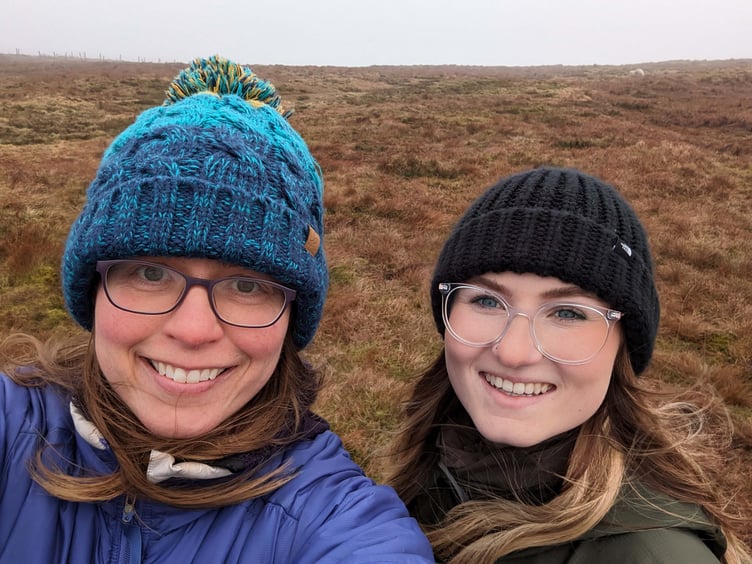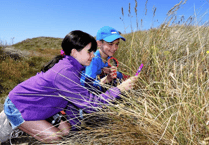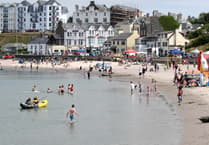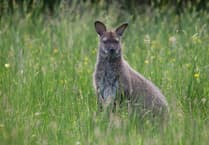Shaun Gelling, Sarah Hickey, and Anna Clarke-Smith are members of DEFA's Uplands Team. They are on a mission to protect and rejuvenate the Isle of Man's peatlands, vital ecosystems that hold the key to a greener future for our island.
In this Q&A we find out more about the work of Shaun (Uplands Manager), Sarah (Peatland and Upland Carbon Officer) and Anna (Upland Ranger).
How does your work promote sustainability?
An example of one of the projects we are working on is the protection and restoration of peatland on the island. Peatlands are really important as a store of carbon – despite only covering 3% of the global land surface, they store more carbon than all other types of terrestrial vegetation combined. They are also an important habitat for wildlife, supporting a range of threatened bird species, such as hen harrier and curlew, and specialist plants.
Some of our peatlands are in a degraded condition, meaning that they are a net emitter of carbon and no longer support peat-forming habitats. This is largely due to historic drainage and the cutting of peat for fuel.
The peatland project is focussed on protecting peatland and restoring areas that are degraded. This starts with surveying areas to map the extent and depth of peat and record details of erosion features and habitat condition. Work then includes re-profiling peat hags so they can re-vegetate and blocking drainage ditches.
Peatland restoration work has multiple benefits, including increasing carbon sequestration, reducing carbon emissions, improving wildlife habitat, reducing downslope flood severity and increasing resilience to drought and wildfire.
What are some of the changes you've made to promote sustainability?
In order to be more sustainable, we are working with local contractors to deliver some aspects of the work involved in peatland restoration. To minimise damage from the required digger work, our contractor has fitted low ground pressure tracks. These spread the load of the digger and reduce damage to the peat and vegetation.
We have had boardwalks installed in some places to prevent damage to peatland and improve access. This work was undertaken by hand to reduce damage to the bog.
One of the aims of peatland restoration is to improve the habitat for wildlife. To avoid disturbing ground-nesting birds, we don’t undertake invasive work during the bird breeding season (April to August).
What benefits have you seen so far?
Undertaking our work in a sustainable way has multiple benefits. We provide employment opportunities for local people with a knowledge of the hills, and we have fewer negative impacts on the peatlands we are working on, including the wildlife supported by these habitats.
Can you share a particularly rewarding moment or achievement related to your sustainability efforts?
We are still at an early stage in our restoration work and the full impact will not be seen for a number of years. However, it has been rewarding to see what work can be achieved in a relatively short period of time.
We also plan to give local volunteers and corporate groups the opportunity to help with the restoration work over the summer months. This will greatly help with the amount of work we can achieve, as well as providing local people and businesses the chance to get involved with such a large-scale conservation project.
What type of challenges have you faced, and how did you overcome them?
One of the main challenges we’ve faced so far is poor weather! Our work is predominantly on the hills, and wet, windy or misty weather can often make it unsafe for our contractors to work. As the invasive digger work is done during the autumn and winter, to avoid impacting nesting birds, the weather can make it difficult to get as much work done as we’d like. The only thing we can really do to overcome this is to have a flexible work plan and make the most of any good weather.
One of the most important things in landscape-scale conservation projects is working with stakeholders with varied interests. It can be a challenge to ensure that the project aims are achieved without having a negative impact on other land users, but it is really beneficial to have input from people with a variety of knowledge and experience.





Comments
This article has no comments yet. Be the first to leave a comment.